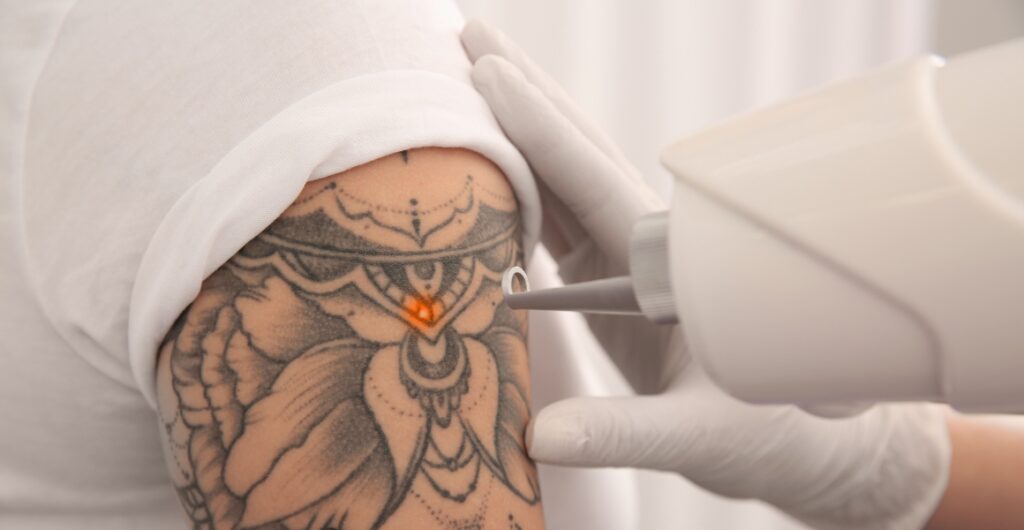Tattoos can be a significant form of self-expression, but over time, many individuals find themselves wanting to remove a tattoo for various reasons. Whether it's due to changes in personal taste, a desire for a fresh start, or simply the need to clear up skin imperfections, laser tattoo removal has emerged as a popular solution. This method is known for its effectiveness and minimal side effects, making it the preferred choice for those seeking to achieve clear skin.
Understanding Laser Tattoo Removal
Laser Tattoo Removal in Dubai works by utilizing concentrated light beams to break down the ink particles embedded in the skin. The process begins with a consultation, where a qualified professional assesses the tattoo, considering factors like the size, color, and depth of the ink. Different wavelengths of laser light are used to target various ink colors effectively, ensuring a comprehensive approach to removal.
The laser's energy is absorbed by the ink particles, causing them to fragment into smaller pieces. This allows the body's immune system to gradually eliminate the shattered ink over time. The procedure is typically performed in a clinical setting and can be customized based on the individual's skin type and tattoo characteristics.
The Procedure: What to Expect
Before the procedure begins, the practitioner will likely apply a topical anesthetic to minimize discomfort. Many patients describe the sensation during the treatment as similar to the snap of a rubber band against the skin. The duration of the session depends on the size and complexity of the tattoo, with most sessions lasting between 15 to 60 minutes.
After the treatment, it's common for the skin to appear red and swollen, similar to a sunburn. This is a normal response and usually subsides within a few hours. The practitioner may provide aftercare instructions to promote healing and ensure optimal results.
Recovery and Aftercare
Proper aftercare is crucial for achieving clear skin following laser tattoo removal. Patients are advised to keep the treated area clean and moisturized to aid in the healing process. Avoiding direct sunlight and tanning beds is essential, as UV exposure can hinder recovery and lead to complications.
In the days following the procedure, patients may notice some blistering or scabbing. It's important to resist the urge to pick at these areas, as this can lead to scarring or infection. Instead, following the practitioner's aftercare instructions will help minimize these risks and promote effective healing.
Multiple Sessions Required
One important aspect to note about laser tattoo removal is that multiple sessions are usually necessary to achieve the desired outcome. The number of sessions varies based on several factors, including the tattoo's age, size, and ink type. On average, patients can expect to undergo anywhere from 5 to 10 treatments spaced several weeks apart.
During these sessions, the ink will gradually fade, and the skin will become clearer. It's essential for patients to maintain open communication with their practitioner throughout the process to discuss progress and any concerns that may arise.
Myths and Misconceptions
Despite its growing popularity, several myths and misconceptions about laser tattoo removal persist. One common myth is that the process is extremely painful; however, most patients report only mild discomfort. The application of a topical anesthetic significantly reduces any pain experienced during the procedure.
Another misconception is that laser removal can leave significant scarring. While some patients may experience temporary skin changes, modern laser technology has advanced to minimize the risk of scarring significantly. By following the aftercare instructions and attending all recommended sessions, patients can achieve clear skin with minimal side effects.
Who Is a Suitable Candidate?
Laser tattoo removal is generally suitable for most individuals looking to remove unwanted tattoos. However, certain factors may influence the decision to proceed with treatment. Those with darker skin tones may require specialized lasers to avoid pigmentation changes. Additionally, individuals with certain medical conditions or those who are pregnant should consult their healthcare provider before undergoing the procedure.
A thorough consultation with a qualified professional will help determine the best approach for each individual, ensuring safety and effectiveness.
Conclusion
Achieving clear skin through laser tattoo removal is a feasible goal for many individuals. By understanding the procedure, managing expectations, and adhering to aftercare guidelines, patients can navigate the tattoo removal journey with confidence. With each session, unwanted tattoos gradually fade, allowing individuals to reclaim their skin and move forward with a fresh perspective.





Comments